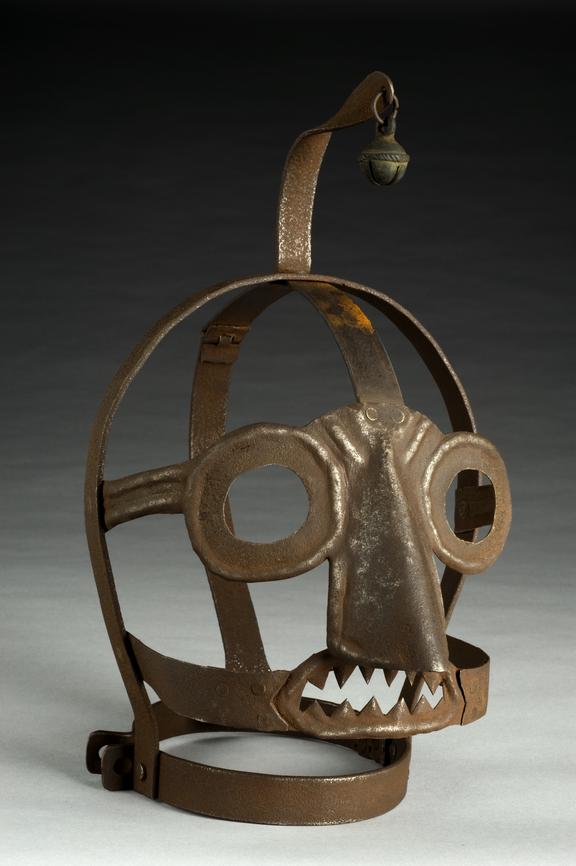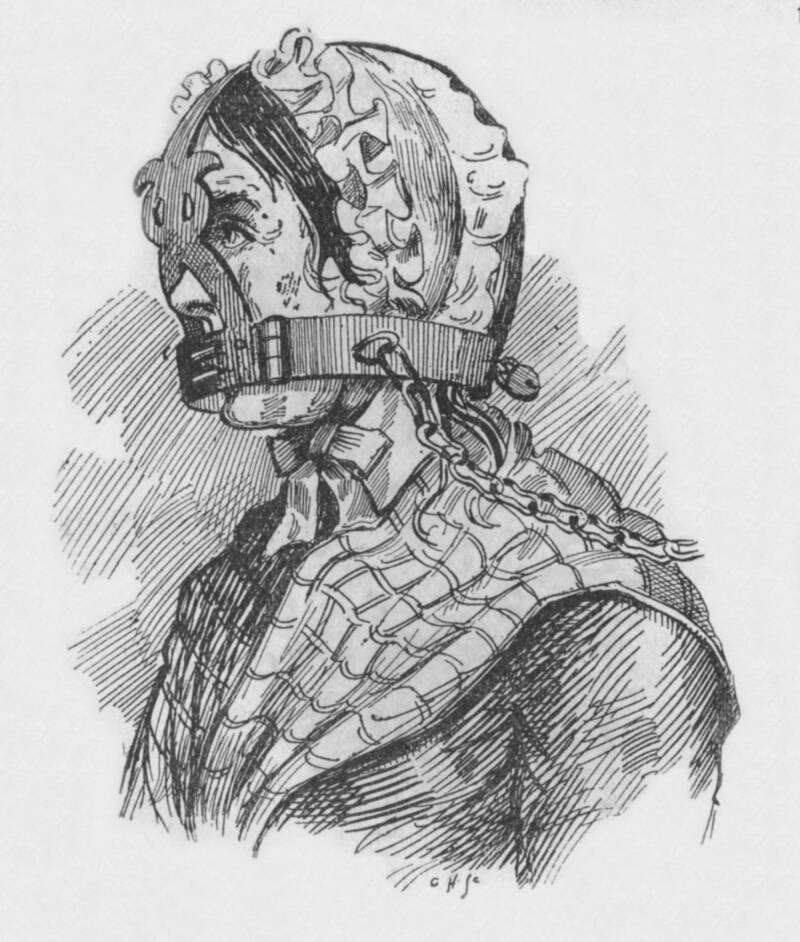The practice of using scold’s bridle masks, which partially cover the face with a large nose-piece and jagged mouth, a hinged neck ring, and a bell suspended at the top of the head, likely originated in Germany between 1550 and 1800.
The use of scold’s bridles (also known as ‘branks’) developed in Britain in the 1500s, spreading to Northern European countries including Germany. These devices have been historically documented as a form of misogynistic punishment, intended for ‘gossiping’ or ‘nagging’ women, though there is evidence they were also used on men.

The term ‘scold’ was a legal designation for someone deemed to have disturbed the peace through their speech – whether by quarreling, drunkenness, or slander. Beyond humiliating the wearer, the bridle was designed to prevent talking, reflecting a culture of repressing outspoken women or those who failed to conform to societal expectations. When used on men, it was typically to punish blasphemy or as a method of restraining prisoners.

There were notable gender-based differences in how these punishments were applied. Men tended to be sent to the stocks or pillories, while women were publicly paraded in the decorated masks, which sometimes included animal features intended to shame them further. This particular example has a bell attached to create additional noise and draw attention to the wearer. Most scold’s bridles included gags – sometimes with a spike – that would be inserted into the mouth to restrain the tongue.

Records of scold’s bridle usage are scarce, possibly because it was considered an illegal form of torture in England. However, instances have been reported as late as the mid-1800s. This specific example was purchased at auction for Sir Henry Wellcome’s museum collection in 1935, though little is known about its detailed history.
